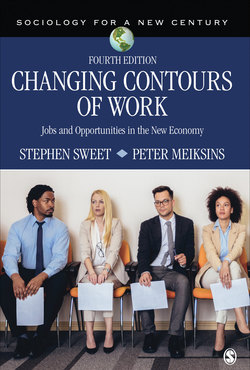Читать книгу Changing Contours of Work - Stephen Sweet - Страница 18
На сайте Литреса книга снята с продажи.
Structure and Work
ОглавлениеIn contrast to culture and the way it creates meaning systems that orient people to work, social structure maintains enduring patterns of social organization that determine what kinds of jobs are available, who gets which jobs, how earnings are distributed, how organizational rules are structured, and how laws are formulated. Social structure does not exist independently of culture. Often, social structure reflects cultural attitudes, because people tend to create institutions that are consistent with their beliefs. And structure can also be in conflict with aspects of culture, creating tensions and contradictions with which individuals and societies must grapple. For example, consider how the structural reality of unemployment creates particularly difficult problems in a society such as the United States, where work is valued or structured as a mandatory part of citizenship. Americans are forced to make difficult choices between their cultural ideals and their social structural context: should the unemployed be made to work, or should they be helped because there are no jobs? If the latter, who deserves help, what kind, and for how long?
Throughout this book, we discuss various aspects of social structure, the access to different types of work, the division of labor, the social organization of workplaces, and legal and political arrangements that influence the design of jobs and the terms of employment. Here, we simply illustrate how social structure affects individuals’ experience of work by considering how a few aspects of social structure—social class, job markets, and labor force demographics—may be affecting opportunities and workplace practices in the new economy.
